Navigating some ups and downs throughout his professional life, Brent Lewis ends federal career on high note.
April 20, 2022Brent Lewis has spent the past 36 years, in his words, “herding contamination in his hobby-career.”
Now, he said, he wants to give his other hobbies a chance to compete for the top spot.
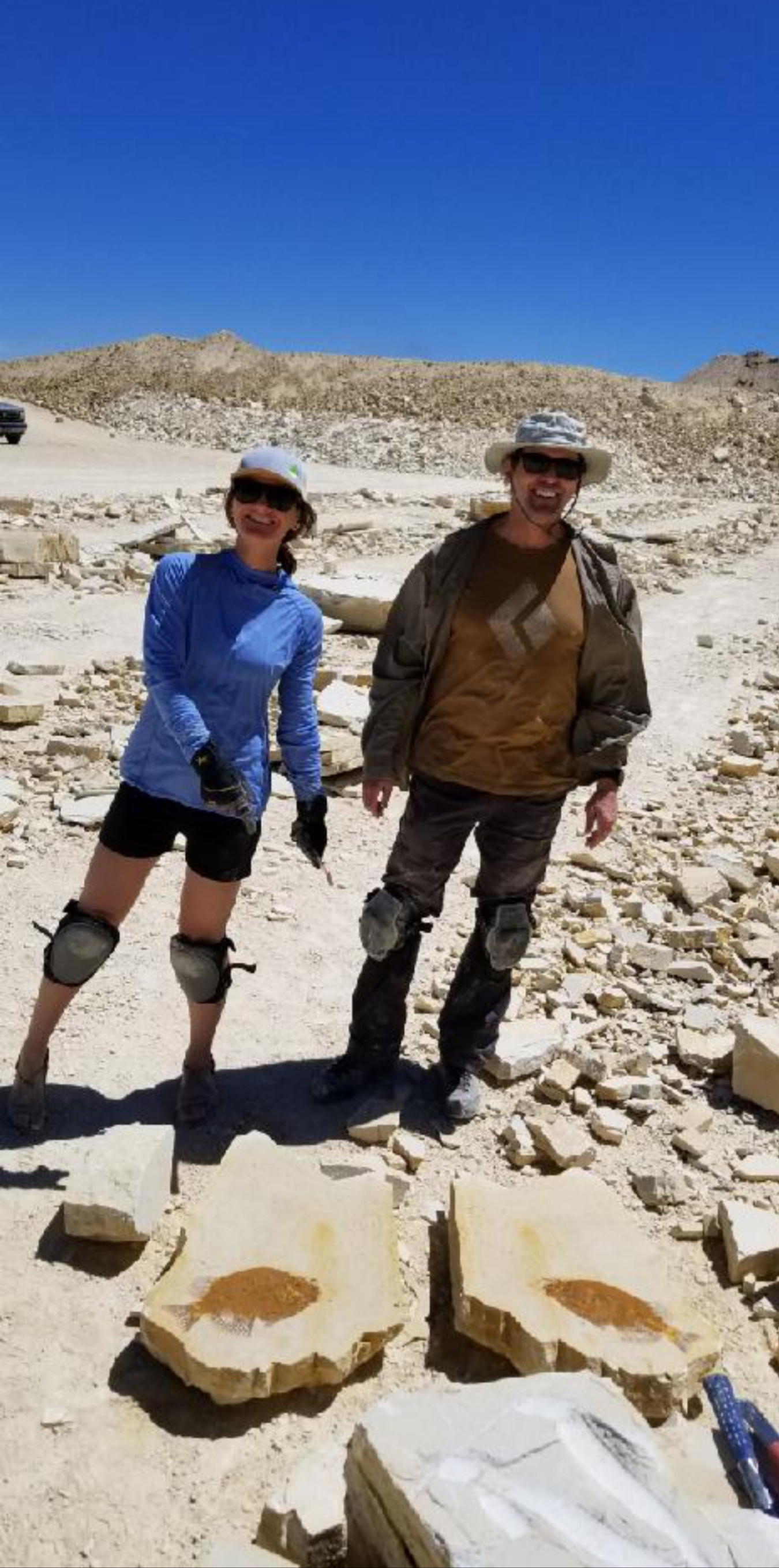
Lewis and his daughter, Chloe, at the Wyoming site.
Lewis is retiring from the federal government and from his position as the technical lead and project manager for Legacy Management’s (LM) Defense-Related Uranium Mine Program (DRUM). Since 2017, his job has been to integrate the objectives of the DRUM program with the needs of LM’s partner agencies. When he looks back on his career, he is proud to have played a major role in the development of a program that helps not only the U.S. Department of Energy, but a host of other federal, state, and Tribal partners.
His proudest accomplishment?
“Working with a team of more than 50 LM and contractor support employees, as well as partner agencies, to bring all the moving parts of DRUM together into a synchronized, productive program,” he said.
Lewis started his career in 1986, sampling nerve agents at the Rocky Mountain Arsenal, a former chemical-manufacturing plant near Denver. For the next three decades he continued to feed his passion for solving environmental contamination issues.
His favorite hobby-job responsibility is defining the nature and extent of contamination and designing the cleanup actions that would be required. The arsenal was a top priority for cleanup of contamination and was designated a “Superfund” site under the Comprehensive Environmental Response, Compensation, and Liability Act (CERCLA).
Lewis eventually moved on to the U.S. Environmental Protection Agency’s REM II program as a contractor, focusing on various Superfund sites across the country. Those initial jobs groomed him for a long and satisfying career, he said.
He spent nearly six years managing and overseeing field crews contracted by manufacturer Rockwell International and defense contractor EG&G at the Rocky Flats Plant north of Denver, a manufacturer of plutonium pits used in nuclear weapons.
Lewis was working at Rocky Flats in 1989 when he said its offices were investigated by agents from the FBI and EPA.
“It was a difficult time,” he said, “but it was also a great learning experience, and the greatest lesson I learned was how a political setting can overwhelm a project and proactive communication is the best method for avoiding and managing most issues.”
Little did he know, decades later, this knowledge would be tested, during his involvement in another environmental incident in Colorado — the Gold King Mine blowout near Silverton, in which 3 million gallons of water contaminated by mine tailings spilled from a holding pond into Cement Creek. The contaminated water ran into the Animas River, affecting water quality in Colorado, New Mexico, Utah, and the Navajo Nation in August 2015.
The accidental discharge was determined to be contractor error. It was another challenging time, he said.
“The Gold King blowout was extremely difficult, because my computer and phone records were seized and formal testimonies followed,” he said.
Later, the U.S. Department of Energy hired Lewis in what seemed, to him, a natural progression in his profession.
“I started my government career managing the same programs I helped establish as a Rocky contractor,” he said.
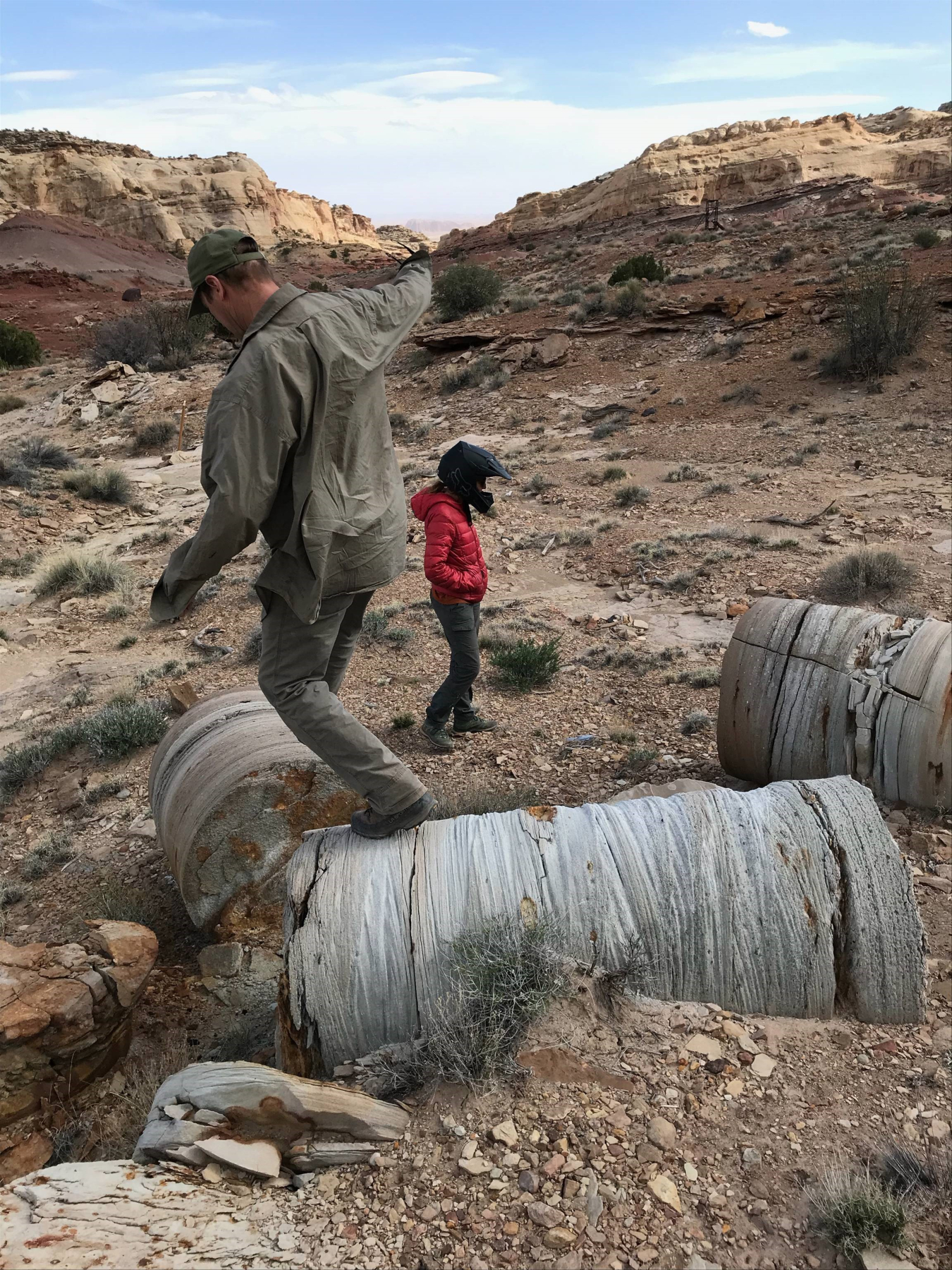
Balancing on calyx drill-core samples near Temple Mountain in eastern Utah.
That path eventually led him to a position with the U.S. Department of Interior. His background made him an ideal candidate to become a national CERCLA advisor for Interior’s Bureau of Land Management, a job in which he spent more than two decades traveling every state in the West, helping BLM characterize contamination issues of abandoned mining and landfill sites.
His specialty was selecting, applying, and integrating the right methods for characterizing site-specific problems and interpreting the data to determine the best response action for cleanup. During this tour, he won two National Environmental Achievement awards from the Interior Department for his creative integration of characterization and response actions.
When Lewis moved to LM in 2017, he used his knowledge of “herding contamination” to help create the Defense-Related Uranium Mine (DRUM) program, focusing on safeguarding abandoned uranium mines in the West. The mines present a variety of physical hazards that LM is working to mitigate.
Lewis described some of the aspects of LM’s work in an interview with KZMU, a radio station in Moab, Utah. There is a lot of ground disturbance near uranium mines, as well as physical hazards which could be adits (mine entrances), vertical shafts, and high walls, Lewis said.
“We’ve noted on public land that recreation is increasing. And the unaware recreationalist can actually fall into shafts. It has happened before,” Lewis said. “Or they are enticed by entering some of these adits just for adventure.”
In fact, Lewis saw for himself how such adits can attract curious visitors who may not understand the risk involved in exploring these artifacts of mining history in the West.
“Above Silverton, I happened upon a vacationing family coming out of an abandoned mine with kids wearing wading boots, and the stains from the acid mine drainage were above their boot tops,” Lewis said.
Chuck Denton, who is the Mine Closure Program manager, Colorado project manager, and Navajo Nation project manager for LM, has worked with Lewis since 2004 when both men worked for BLM. Denton praised his colleague’s work ethic.
“Brent delayed his retirement date from the original August 2021 date to manage the DRUM team through transition after the DRUM supervisor (Jay Glascock) was promoted,” Denton said. “Brent performed daily supervisory and leadership administration and performed his technical leader responsibilities.”
During this time, Lewis completed end of fiscal year responsibilities, initiated the new fiscal year, and started DRUM Campaign 2 to address mine hazards on tribal land.
“Brent worked tirelessly to develop program charter documents and workplans to describe processes that DRUM team members follow today,” Denton said. “The DRUM team will miss Brent Lewis, but his legacy remains.”
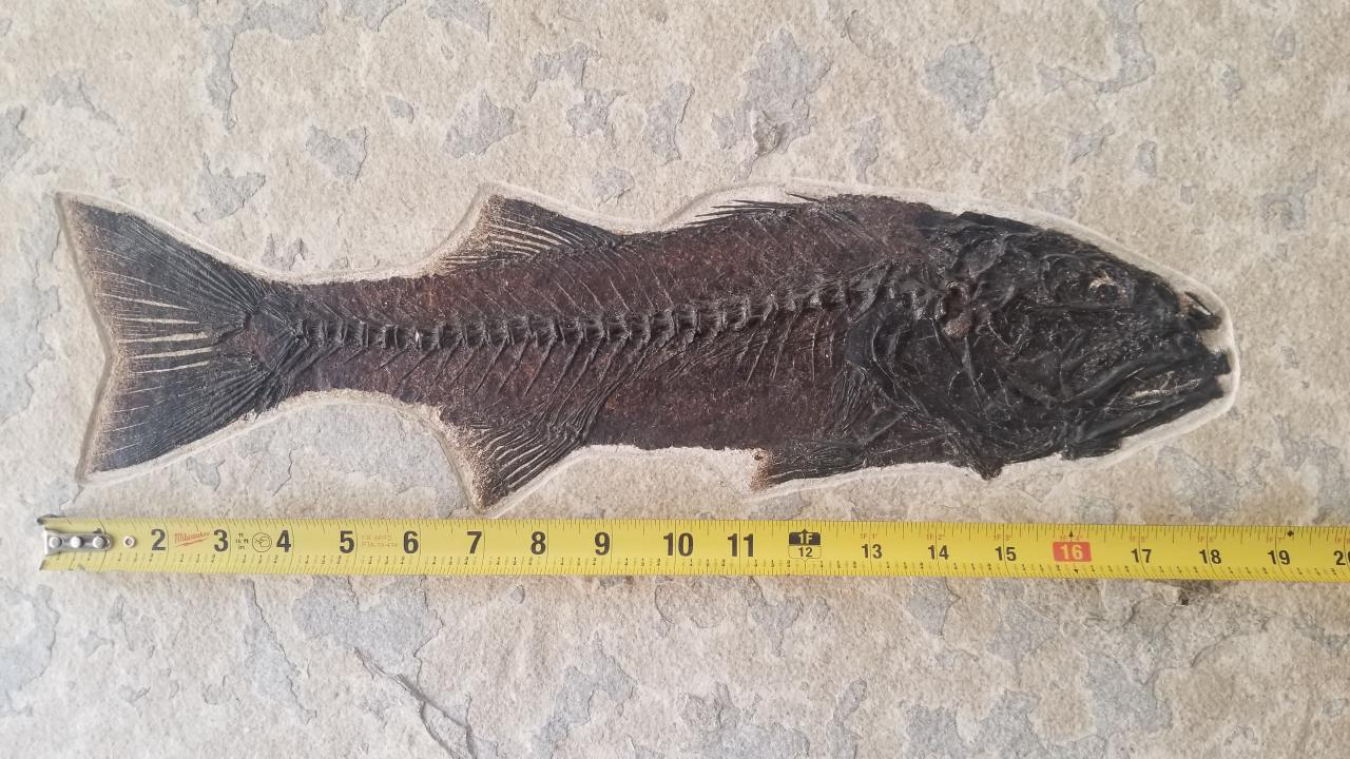
An unusually large Mioplosus, a now-extinct, walleye-like fish.
Now, with his LM career winding down, Lewis’s next tour might just be a hardwater fishing trip — to look for 53-million-year-old fossils in the Green River Formation near Kemmerer, Wyoming. The world-renowned fossil formation is recognized by Fossil Butte National Monument, but Lewis does his collecting at licensed quarries in the area.
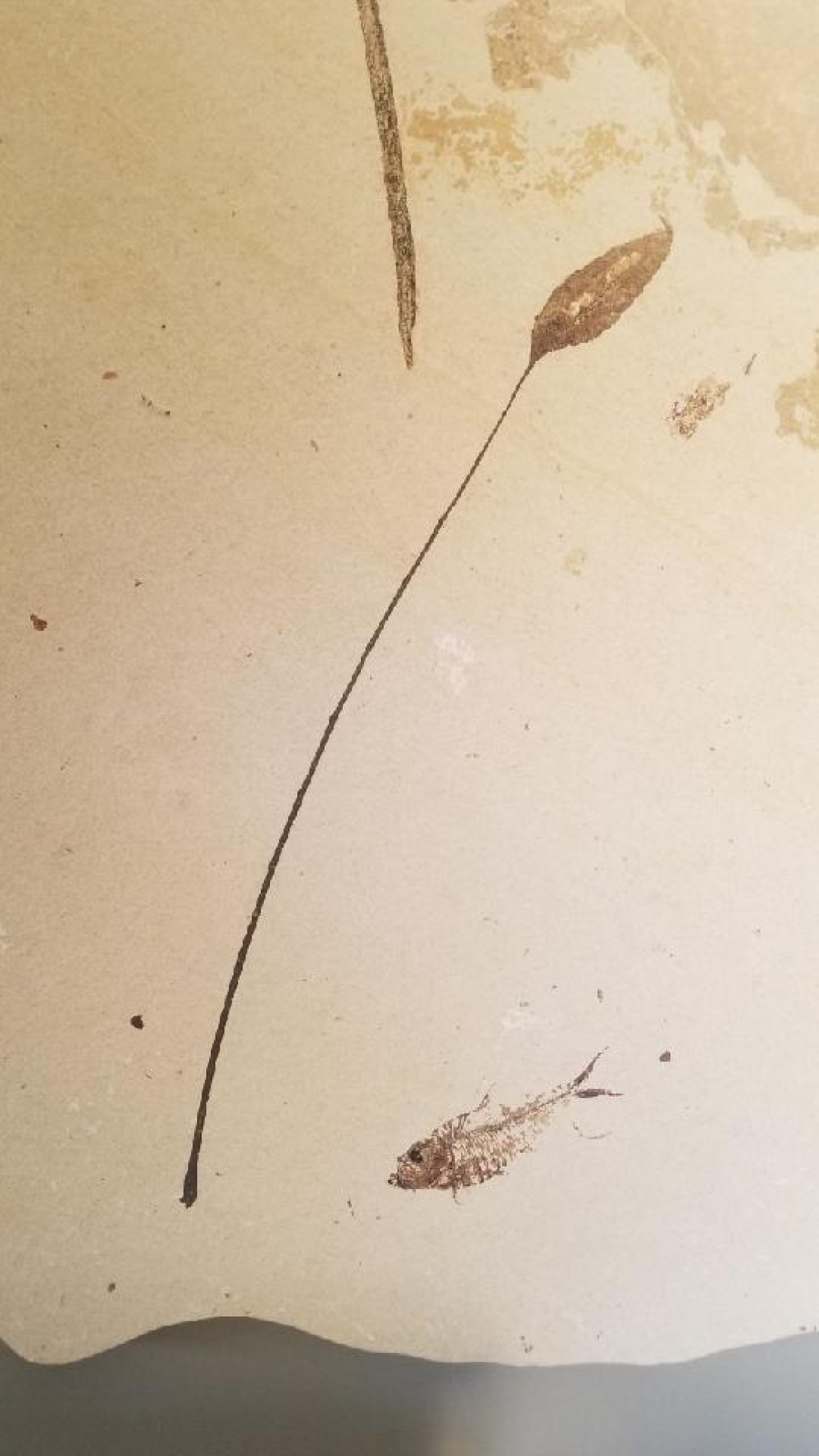
A single reed with a small fish called a Dyplomystus. The specimen is “my favorite find so far,” Lewis said.
“The fossils preserved in this formation are extremely unique, with extraordinary detail,” said Lewis, who added his favorite finds are combinations of plants and fish together in a single sample. “My favorite is a simple, long single-leaf reed plant with a small Dyplomystus. The leaf has been partially devoured by a leaf miner insect that is also preserved. A special bonus.”
With plenty of free time in his future, Lewis also has backpacking trips planned in the Cascades of the Pacific Northwest and closer to home in the Rockies, including the 486-mile Colorado Trail. He knows he’ll spend some of that free time in pursuit of fish that are livelier and tastier than his usual quarry fish.
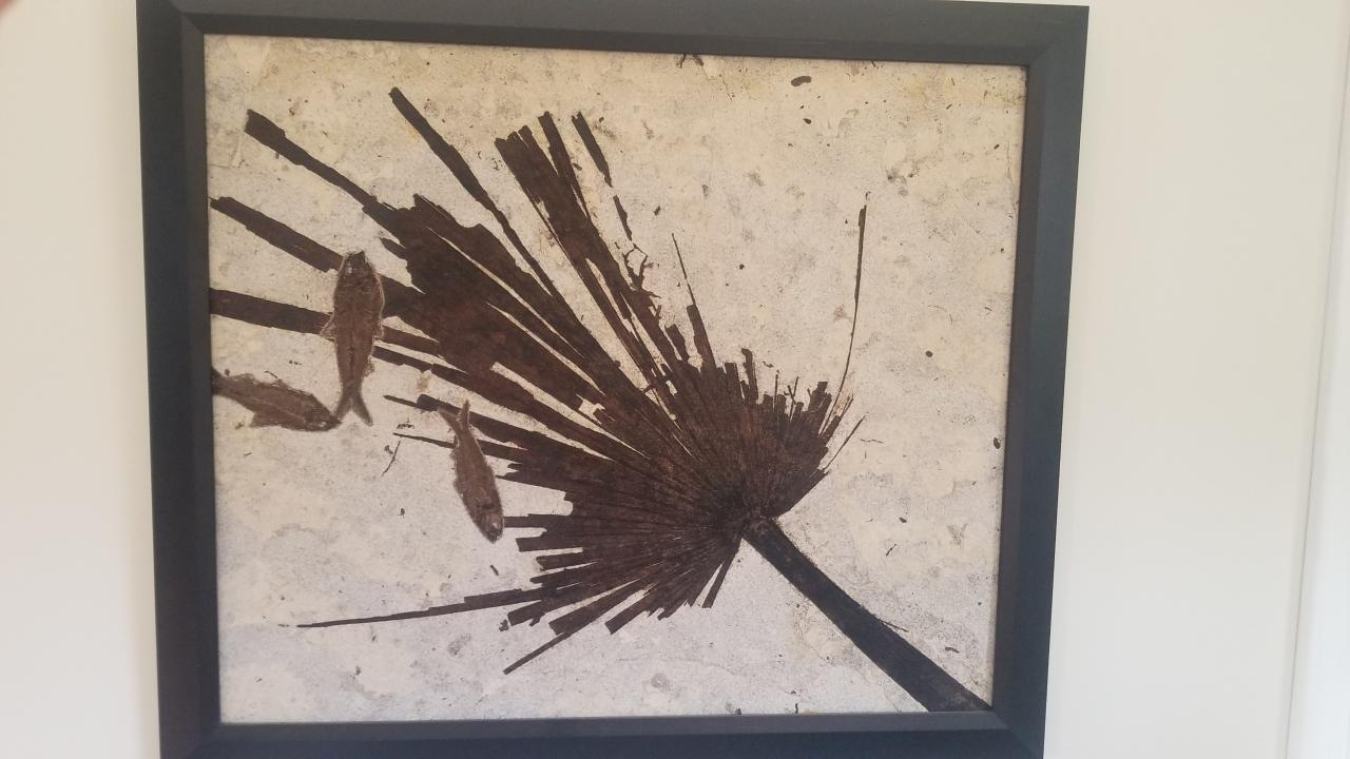
A palm leaf and three Knightia fish Lewis found at the Wyoming site.
“I enjoy fishing in remote locations and combine it with long backpacking trips, so I have the added benefit of not having to carry all my food,” he said. “But the pressure is on to catch dinner.”
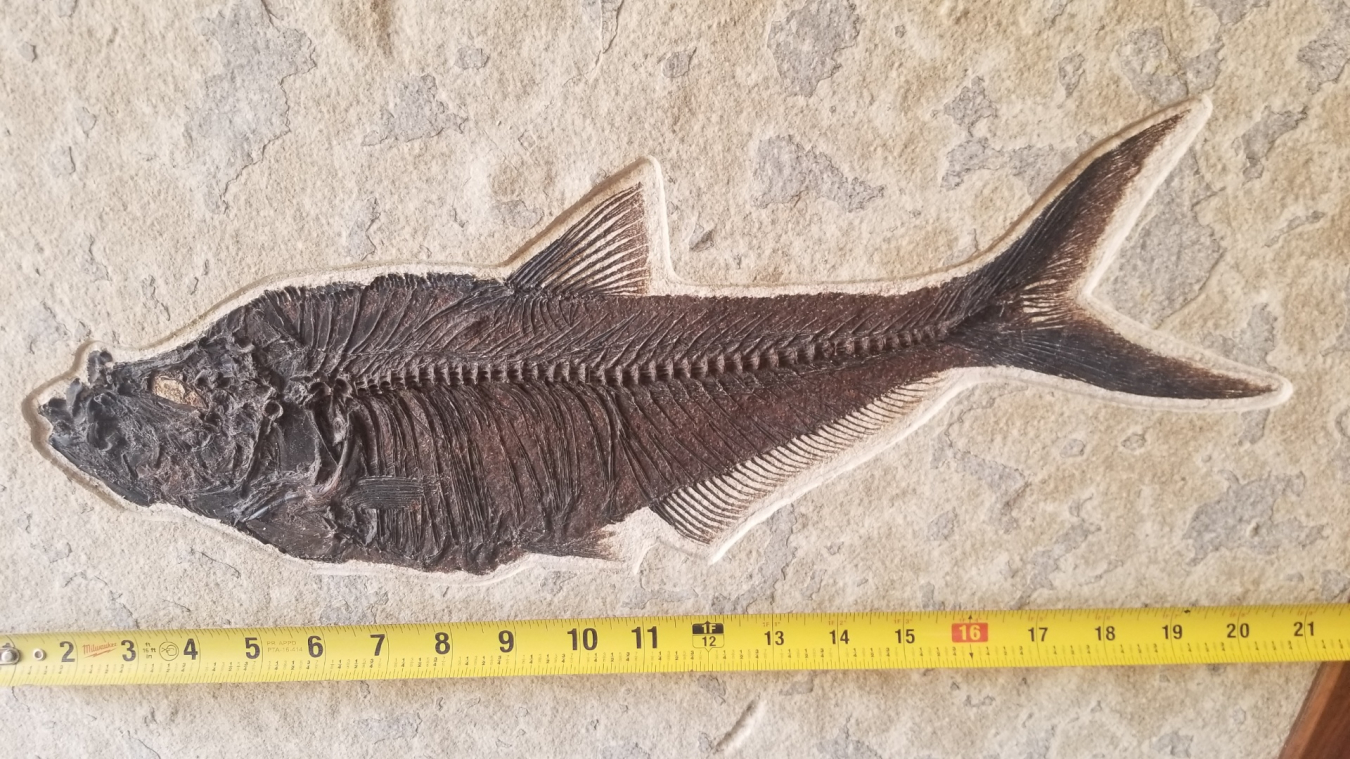
A common, but large, Diplomystus.

